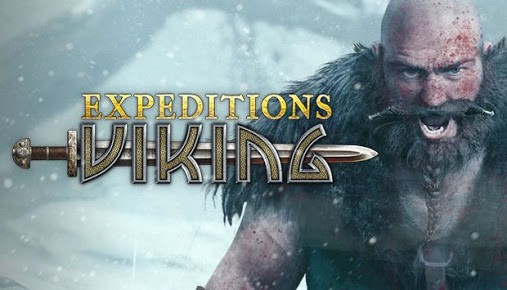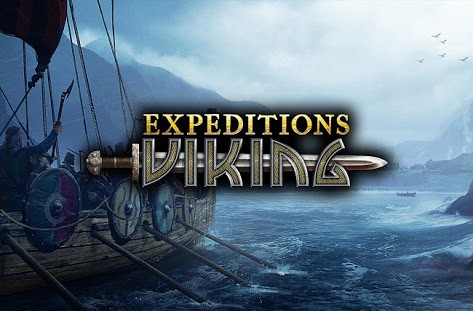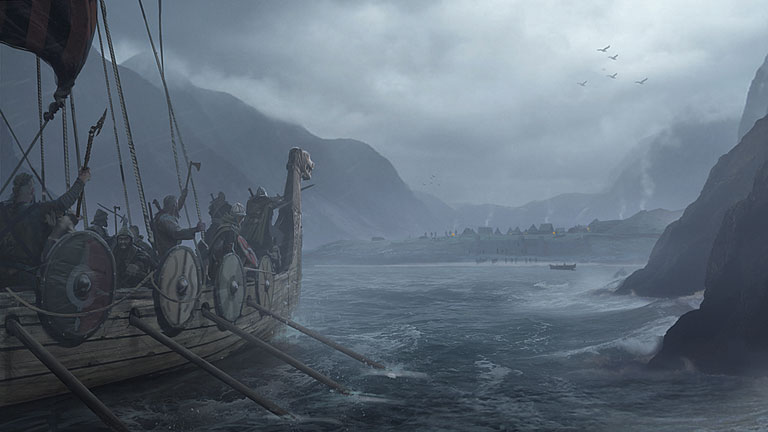Expeditions: Viking Weapon Guide

Weapon types and their roles
One-handed
The benefit of one-handed weapons is that you can pair them with a shield, and shields are incredibly useful on higher difficulties. You also have the option of dual-wielding.
Sword – strength
The sword is the one-handed weapon to go for if you’re looking to do damage and nothing but. They have a skill that performs a pre-emptive strike, a skill that ignores the target’s damage reduction, and another skill that’s an execute.
Axe – strength
Contrary to what you might think from other games, the axe puts less emphasis on damage in this game. Instead, it’s more of a front liner’s utility weapon. The axe comes with two skills designed to deal with an opponent’s shield (one that removes it for that turn, and another that does guaranteed damage to the shield) while their final skill allows them to disarm an opponent. This is incredibly powerful, and as such, I recommend the axe for pure defending/support characters, or as a backup for primary sword wielders.
Knife – finesse
If your character has a lot more finesse than strength, and you still want them to have a shield (Nefja might be such a character for example), then your best option is most likely a knife. The knife comes with one skill that does double damage against immobilized targets (such as those who were hit with the Stun or Cripple skill), one skill that gives you two half-damage attacks (to targets of your choosing) with a chance to bleed, and one attack skill that gives you a free action. There is not much to be said about Knives. They are a good choice if you want to dual wield and work fine paired with a shield in some stat distributions, but offer little besides damage.
Shield – endurance
While the shield skills themselves are not all that impressive, the main benefit of increasing it is the increased block chance per level, which scales directly with your endurance. This means that a character with 10 points of endurance will get an extra 10% block chance per shield level. If you’re going to use a shield, having a good amount of endurance is paramount. Because after all the inverse is also true; a character with only 1 endurance would only gain 1% block chance per shield level.
Two-handed
There are only two types of two-handed melee weapons in the game: the Dane axe and the spear. The strategic advantage to these is that they have 2-3 hexes range, so you can place them behind your tanky shieldbearers and safely hit the enemy attackers. You will also occasionally be able to hit an enemy across an obstacle that other characters would have to walk around.
Dane Axe – strength
The Dane Axe is the two-hander that scales with strength. It is a great weapon at doing raw damage, with a tiny bit of utility and has one of the rare area-of-effect attacks in the game (the final unlocked skill). Overall a weapon with a nice mix of damage, range, and versatility. Still recommended to have these characters have some sort of shield backup.
Spear – finesse
Compared to the Dane Axe, the Spear has more reach thanks to its first skill, and it also has the potential to inflict a lot more damage; scaling with finesse rather than strength means the spear user gets a lot more crits. The remaining spear skills are tools that help spear users and their allies avoid enemy attacks of opportunity. This will occasionally come in handy, but a good player should be avoiding or accounting for those regardless. Much like with the Dane Axe I still recommend having a shield to fall back on. Considering you’ll be focused on finesse, a good secondary weapon to pair with that shield is a knife.
Ranged
There are only two ranged weapons in the game, and both scale with perception. Having at least two ranged characters in most engagements is crucial in my opinion, as they can do a ton of damage from a reasonable distance. Bows and slings compliment each other very well, so I actually recommend you have your characters learn both rather than one. You can still teach them Rebuke (offensive skill) and Point Blank (passive) to deal with situations when they get jumped.
Bow – perception
Put simply, the bow is the damage dealer of the two. If all you care about is doing damage damage damage, then pump points into bows. They have a skill that lets them ignore partial cover, one that lets them attack twice, one that lets them ignore the accuracy over distance penalty, one that sets stuff on fire, and another that rains arrows randomly in an area. Yeah, damage.
Sling – perception
Compared to the bow, the sling is the exact opposite. It is probably the purest support weapon in the game. One of its skills grants your allies cover (protecting them from enemy archers who can be a menace on high difficulties), another applies up to three debuffs on enemies in an area, and the final one douses an area in oil (which you can set on fire with your bow skill!).
TOP 7 Current & Future Games for Fans of Norse Mythology (2022)





